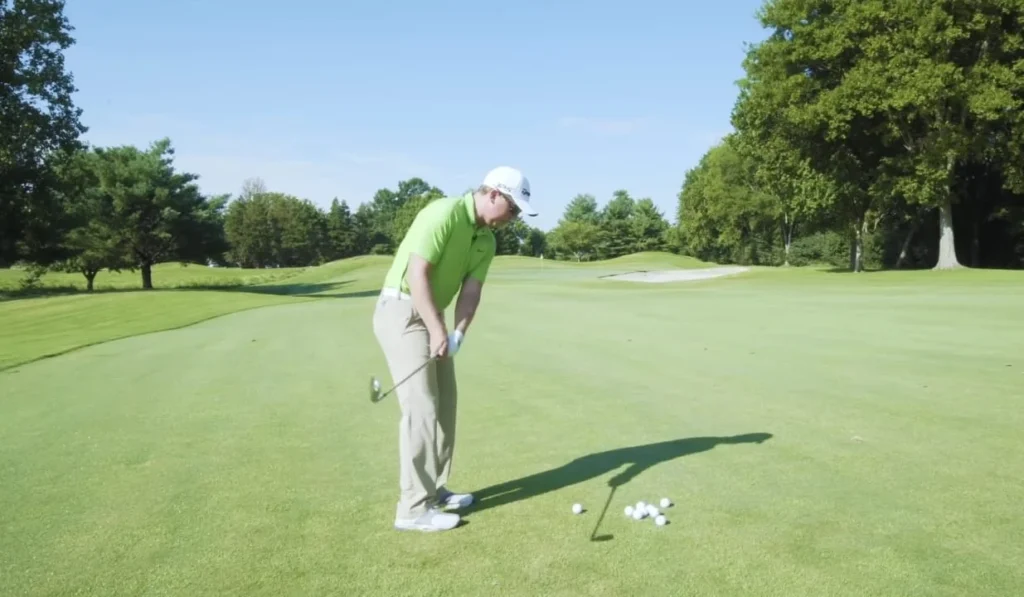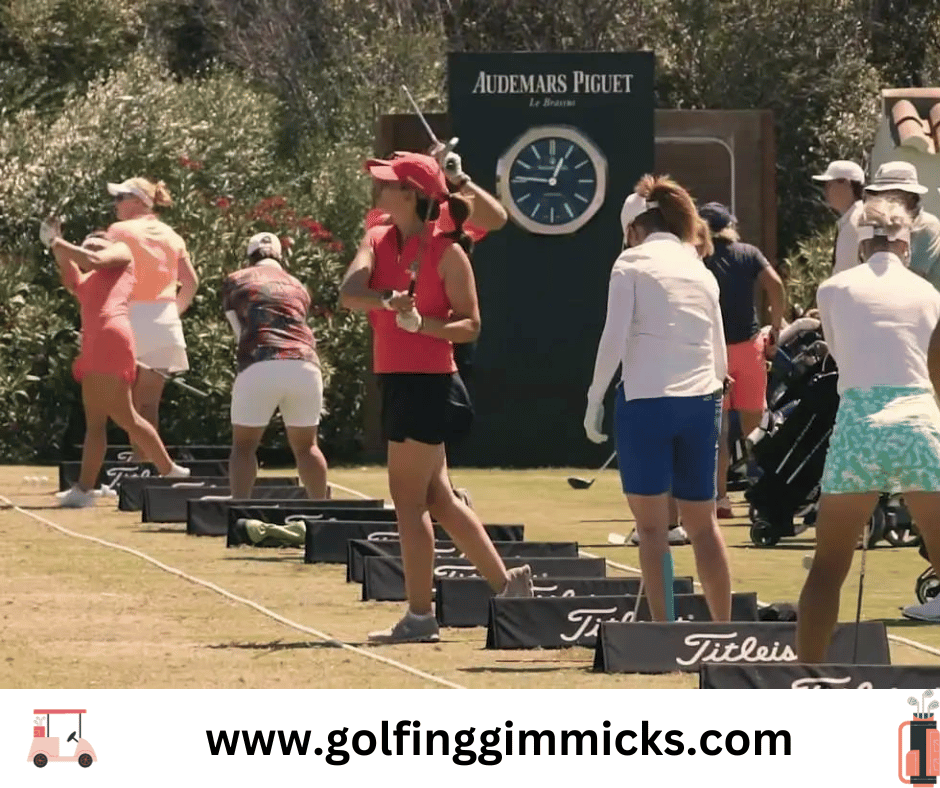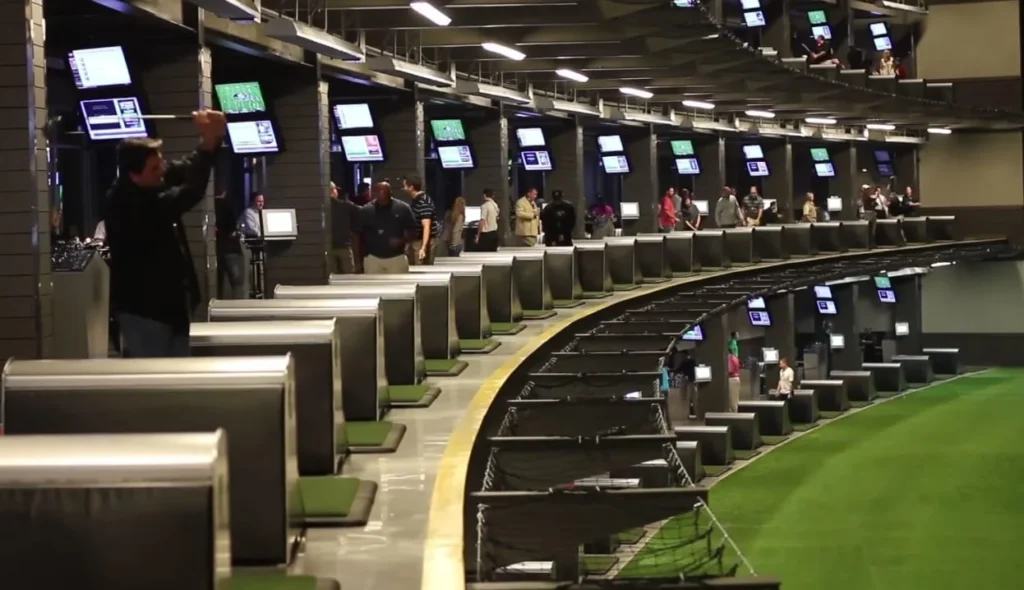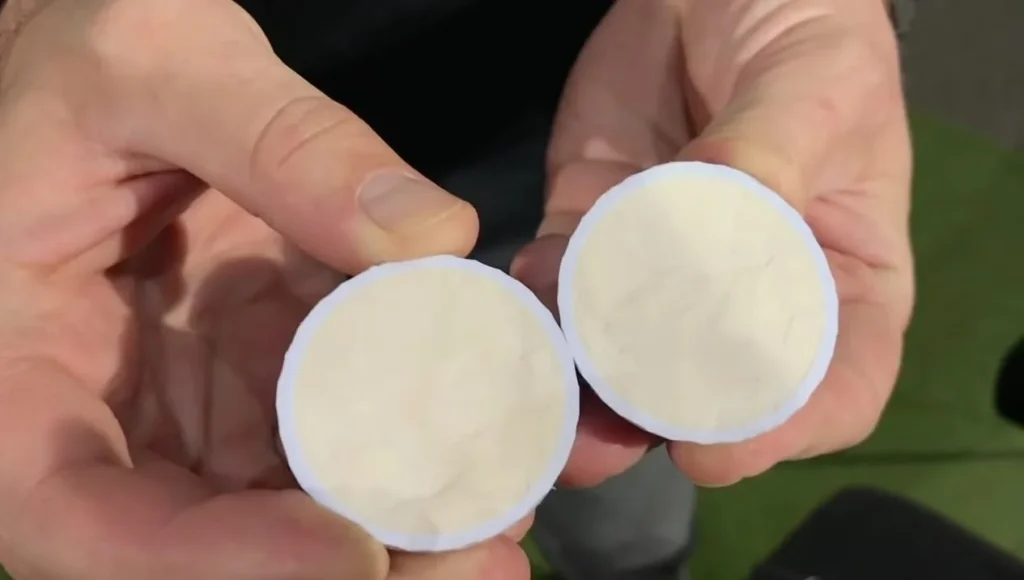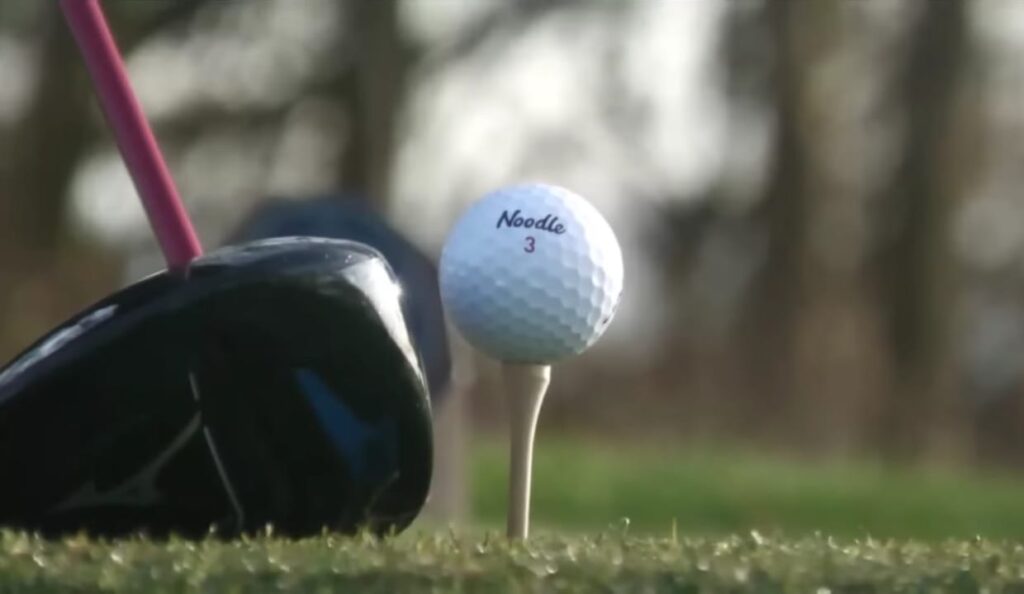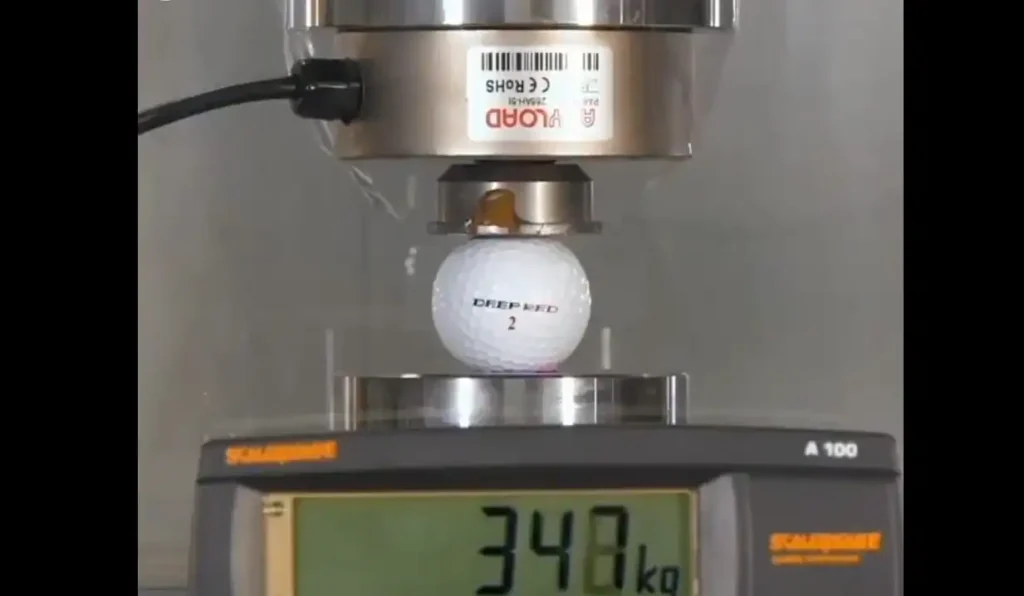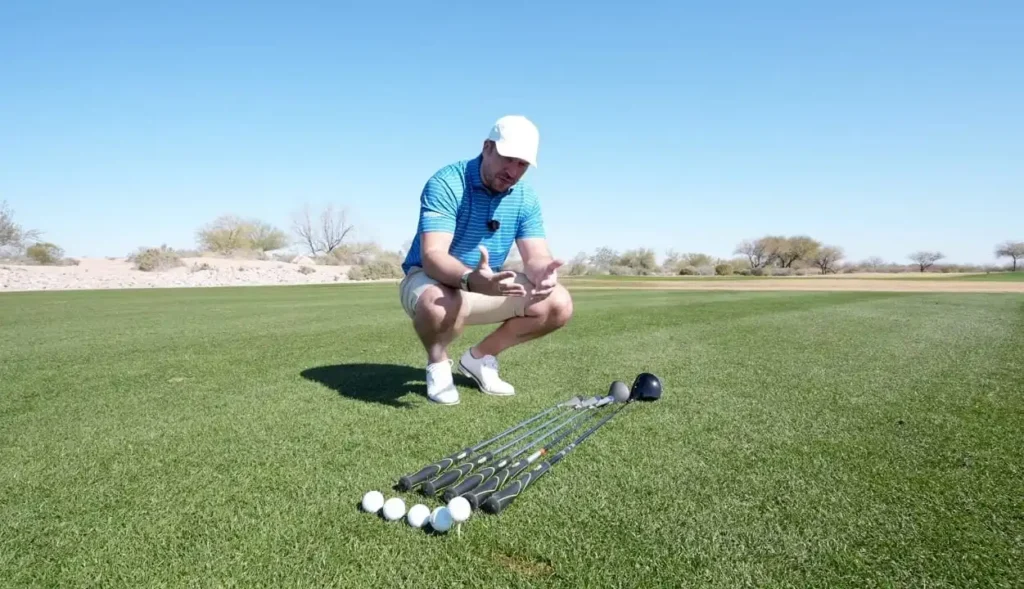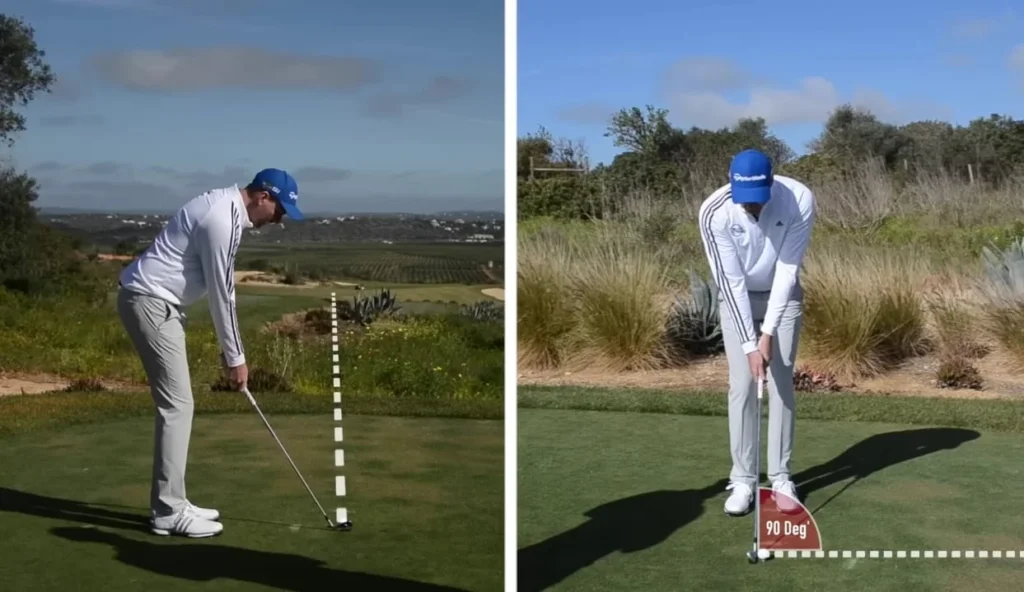In the intricate world of golf, where every swing is a delicate dance between power and finesse, mastering the art of putting a backspin on a golf ball adds a layer of sophistication to your game. Whether you’re aiming for a precise approach shot onto the green or trying to stop the ball on a downhill putt, understanding how to impart backspin is a skill that can elevate your performance. Now, if you are trying to surprise your pals or improve your game then consider putting backspin on a golf ball. Let’s discuss what a backspin on your golf ball means you it can improve your game. Hopefully, it will bolster your understanding of this game while also motivating you to read more content on Golfing Gimmicks.
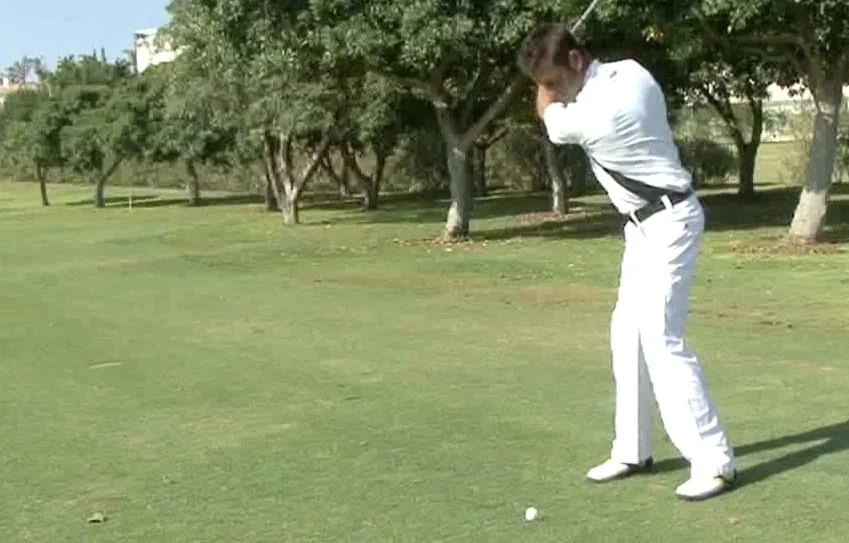
What is Backspin?
Backspin occurs when a golf ball spins backward as it travels through the air. The phenomenon of backspinning disturbs the airflow around the ball, causing the dimpled sphere to spend more time flying across the air and cover a longer distance. In other words, putting backspin on a golf ball means the higher it will glide through the air and the farther it will go.
Why Do You Need Backspin?
Backspin is vital in golf as it increases a ball’s airtime, providing better control, precision on landings, and stopping power on the green. Real-time data reveals its correlation with improved proximity to the pin, reduced roll distance, and increased putting success. That’s why putting backspin on a golf ball the right way can benefit your game very significantly.
Art Of Putting Backspin On A Golf Ball
Putting a backspin on your dimpled sphere can be a bit tricky. Here’s what you should bear in mind about backspinning. The angled edge of the clubface creates a backspin. This speeds up the air going over the top of the ball and slows down the air flowing underneath the ball. This is known as Bernoulli’s principle – which states that when a fluid’s speed increases, the pressure within it decreases – explaining how putting backspin on a golf ball increases the distance. Due to the angled edge of the clubface, the air above the ball speeds up, while the air below slows. The lower pressure above the ball creates an upward force, making it travel further.
1. Clean and Dry Grooves
Begin with the basics i.e., ensure your club’s grooves are clean, dry, and operational. Dirty or wet grooves hinder clean contact, reducing friction and backspin. Wipe your grooves before and after each shot.
2. Pick the Right Golf Ball
Choose a golf ball with a soft covering, such as Titleist Pro V1 or Callaway Chrome Soft, as softballs generate more spin. Premium golf balls generally offer better spin control.
3. Position the Ball in Front of the Center
Place the ball in the front or center of your stance to allow a descending angle at contact. This setup facilitates a clean strike with increased backspin, helping you with putting backspin on a golf ball.
4. Open Your Stance
For short shots around the greens, open your stance by aiming your feet to the right of the target. This aids in added rotation, contributing to increased spin.
5. Open Clubface at the Address
Deloft the clubface by setting up with an open face. This helps visualize the desired impact and enhances the ball’s ability to stop on the green.
6. More Weight on the Lead Leg
Shift approximately 55% of your weight onto your lead leg to drive the club under the ball, creating the necessary friction for a backspin. Adjust weight distribution for different shot lengths.
7. Cupped Wrist Leading into Impact
Experiment with wrist positions. Cupping or extending the wrists steepens the shaft, opening the clubface for a clean strike. Maintain good wrist control for optimal backspin. That’s how you end up putting backspin on a golf ball very successfully.
8. Rotate Around Lead Leg
Continue rotating around your lead leg through impact to ensure the clubhead drives under the ball, maintaining a delofted face for increased backspin. So, this was our 8-point summary of how to create a backspin on your dimpled sphere.

The Role of Equipment In Backspinning Golf Balls
Have you ever wondered how backspin and side-spinning affect your golf ball’s trajectory and determine its final destination? Well, go and click on the above link to find out the truth behind how putting backspin on a golf ball influences the damn thing. Here, we will discuss what role your golfing equipment plays in deciding how well a backspin you can generate.
1. Choose the Right Ball
Real-time data analysis indicates that the choice of golf ball significantly influences spin. Opt for a ball designed to maximize spin, often characterized by a softer cover material. That’s how you can go about putting backspin on a golf ball properly.
2. Wedge Selection Matters
Data from professional golfers underscores the importance of wedge selection. Higher-lofted wedges, such as sand and lob wedges, are engineered to increase the interaction between the clubface and the ball, promoting greater spin.
3. Groove Technology Insights
Advanced groove technology plays a pivotal role in spin generation. Recent data highlights the impact of well-designed and properly maintained grooves on backspin. Ensure your wedges are in optimal condition to maximize their spin potential.
Perfecting Your Backspinning Technique
If you are looking to improve your backspinning strategy then we have some ideas for you here. Putting backspin on a golf ball shouldn’t be a hassle; you can easily implement the following suggestions to offer your dimpled spheres a proper spin.
1. Optimal Launch Angle
Real-world data insights reveal that achieving the right launch angle is critical for generating maximum backspin. Experiment with your setup to find the ideal launch angle for your swing and the specific conditions.
2. Quality of Contact
Analyzing golfer performance data emphasizes the importance of solid contact between the clubface and the ball. Strive for a clean, ball-first impact to enhance spin rates. Consistent and centered strikes contribute significantly to spin production. That’s the secret to putting backspin on a golf ball with optimal results.
3. Utilizing Spin Loft
Spin loft, the difference between your angle of attack and your clubface angle plays a crucial role in backspin creation. Real data studies suggest that fine-tuning your spin loft can result in higher spin rates. Experiment with your swing to find the optimal spin loft for your game.
Drills to Enhance Backspin
You can further try the following drills to enhance the backspin and achieve an even better result. Bear in mind that putting backspin on a golf ball isn’t difficult, but you gotta know the right way to make it better. So, try these simple strategies.
1. Tee Drill
Place a tee about half an inch in front of the ball. Focus on striking the ball cleanly while avoiding the tee. This drill encourages a downward strike.
2. Pitching Practice
Spend time practicing pitch shots with your wedges. Focus on consistent contact and controlling the trajectory to develop a feel for generating backspin.
3. Short-sided Bunker Shots
Practice hitting short-sided bunker shots. The technique used in these shots naturally promotes backspin. That’s how you can end up putting backspin on a golf ball properly.
Advanced Techniques for Iron Backspin Mastery
Getting a backspin on your iron long shots can be difficult. So, this section will help you get this thing done with 100% results. Putting backspin on a golf ball with a four-iron isn’t hard; all you gotta do is follow these simple tips.
1. Manage Your Spin Loft
Spin loft (the difference between your angle of attack and the loft of the club) is a key factor in backspin creation. Real data insights suggest that fine-tuning your spin loft with irons can lead to increased spin rates. Experiment with your swing to find the optimal balance.
2. Wrist Action and Release
An in-depth analysis of golf swings indicates that wrist action and release significantly influence spin. Develop a controlled and consistent wrist action through impact, allowing for a slight “late release” to maximize backspin without sacrificing accuracy.
3. Distance Control
Real-time data highlights the correlation between distance control and backspin. Practice controlling your iron distances, as the ability to consistently hit specific yardages contributes to better spin management. That’s how putting backspin on a golf ball is made possible.
Practice Gear for Golf Backspin
If you want to master spin control in golf then it’s necessary to purchase the right products. These products may include a golf launch monitor, a short-game practice net, or a pro tee system among others. If you watch a YouTube video, one of the many uploaded on that site by golf lovers and teachers, you’ll notice that they always test different golf balls using a practice net and launch monitor. That’s why they become better at playing golf! So, you can take a page out of their book; practice your backspin with the products mentioned below. Click on these links, read all recent reviews, compare the pros and cons, and make sure these products can be shipped to your location. That’s how you can improve your rudimentary golf skills.
| Professional Tee System | More Information |
| Golf Hitting Mat Artificial Turf Mat for Indoor/Outdoor Practice | More Information |
| Golf Short Game Practice Net | More Information |
| BrushPro Golf Club Cleaner with Ergonomic Grip and Retractable Cord | More Information |
| TaylorMade Hi-Toe 3 Wedge | More Information |
| Golf Launch Monitor | More Information |

Conclusion
As we wrap up this exploration into the world of putting backspin on a golf ball, it becomes evident that this skill is more than just a flashy trick—it’s a strategic advantage that can enhance your control and precision on the course. The essential guide and drills we’ve delved into provide the building blocks for mastering this art, allowing you to approach each shot with confidence and finesse. That’s how putting backspin on a golf ball is made possible with optimal results. For further golfing-related tips and strategies, visit our website Golfing Gimmicks, and increase your knowledge.
FAQs: Mastering Spin Control in Golf
1. How do I put a backspin on a golf ball?
Generating backspin involves selecting the right wedge, using a ball with a urethane cover, and maintaining clean grooves on your wedge. Focus on a consistent and slightly steep swing plane, precise ball contact, and optimizing loft and launch angle for effective backspin.
2. How to put a backspin on a golf ball in PGA 2K23?
In PGA 2K23, backspin control is nuanced. Adjust the backspin setting based on shot distance, wind, and green conditions. Experiment with different clubs and ball types to find the right combination for optimal backspin performance.
3. How to put a backspin on a golf ball when chipping?
Chipping with a backspin requires a delicate touch. Utilize a wedge with a higher loft, focus on clean ball contact, and experiment with various chipping techniques to control spin. Consider factors such as green firmness for precise backspin on chip shots.
4. How can I put more backspin on a golf ball?
To increase backspin, explore higher-lofted wedges, use a ball with a urethane cover, and ensure well-maintained grooves. Fine-tune your swing plane, focus on sweet spot contact, and optimize loft and launch angle for enhanced backspin performance.
5. How to put a backspin on a golf ball with an iron?
Achieving backspin with an iron involves selecting the right club, focusing on clean ball contact, and optimizing loft. Experiment with different irons to find the one that offers the best balance of distance control and backspin for your approach shots.
